In the far back corner of the town cemetery in Centerville was the perfect climbing tree. At a younger age, I yielded to the temptation one day and climbing this tree was almost like walking up a staircase or ladder, in that there was a strong, easy to grab branch wherever you needed a handhold or place for your foot. High as I dared to go, I spent a memorable time being rocked back and forth as the tree swayed in the breeze.
Memories like this often come to me while working on a model. They infuse the work and my enjoyment of it via a personal connection that lifts the model from artifact to expression.
The sycamore tree armature is covered in bark texture and ready for painting. I chose paintable acrylic caulking for the bark, since it’s readily available and inexpensive, plus, I had some on hand. I applied the material with a palette knife along with a disposable foam brush and water for the smooth texture this tree model required. Once dry, usually overnight, the caulking is strong enough to handle without damage, yet remains flexible.
After the first coat, I evaluated the results and added more caulking to fill out certain areas I felt still needed work. My main focus was making certain the texture of the bark was appropriate for the background role this tree plays. Even though the tree is mere inches from the tracks, there is an implied distance from the forced perspective of the surrounding objects and subdued colors of the scenery. From such a distance and at a greatly reduced scale, the texture of the bark would not be apparent to the eye. With that in mind, the coloring will suggest any detail.
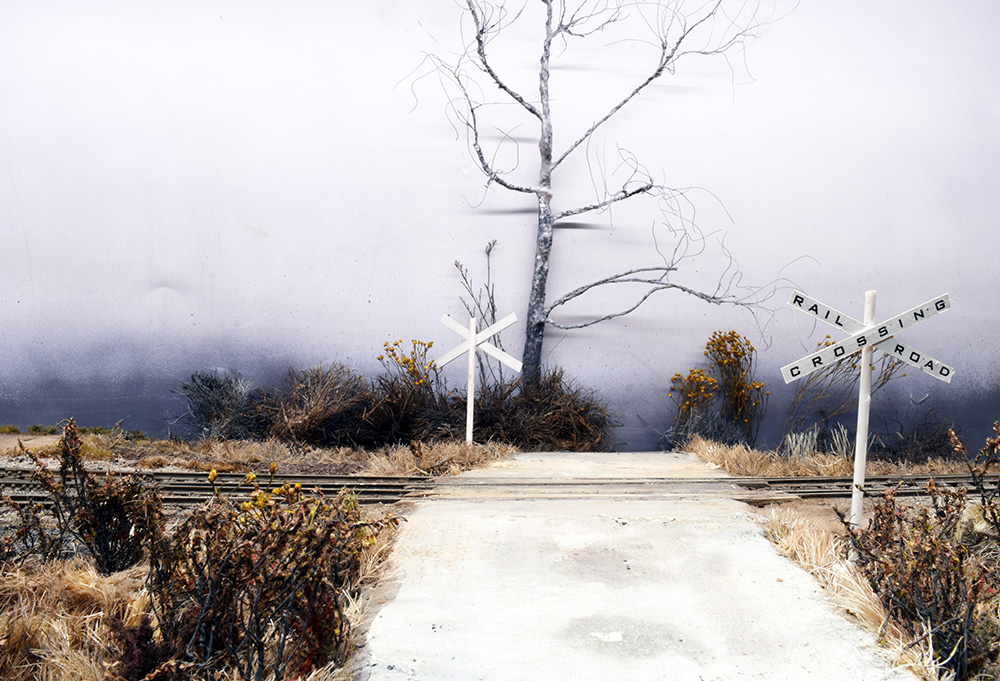
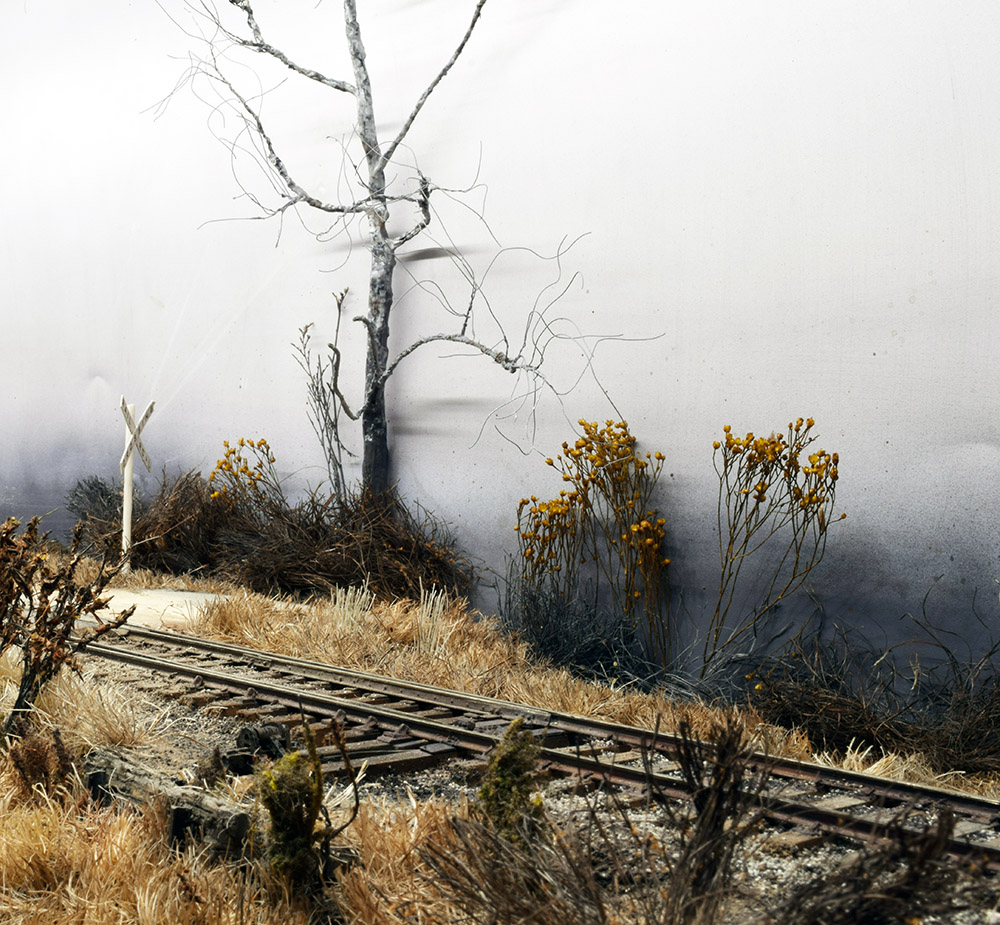
Trees Are Individuals
The mottled coloring of sycamore tree bark appears completely random. I’m not able to discern any sort of pattern beyond the fact that the lower trunk is covered in a gray/brown bark with a scaly texture (see the last post). The branches feature a cream colored bark that is smooth with exfoliating patches of browns and grays. It’s safe to say each tree seems to have an individual character.
Matching colors is not one of my strengths. I get by but never feel confident in mixing the colors. There are many variables to consider such as color temperature, the color of the lighting, how atmospheric distance impacts the object and so on. I have the same light fixtures over my bench as used on the cameo, so color shifts aren’t a problem.
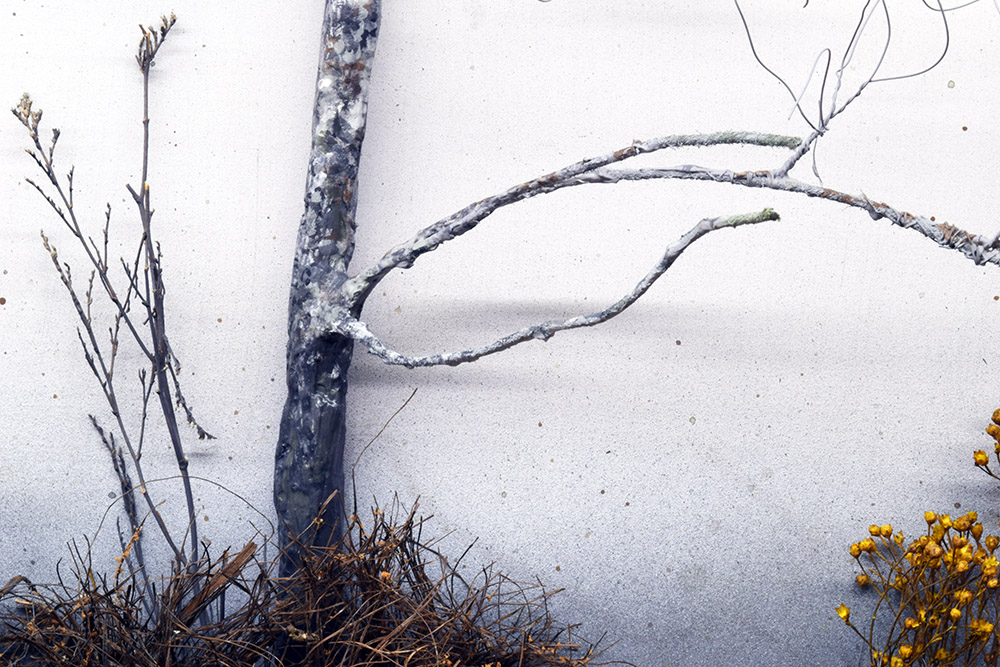
The Freedom To Fail
I sprayed a base layer of Mr. Surfacer gray primer just to cover the caulk and provide a bit of tooth for the layers to come. (I did this outdoors. Mr. Surfacer has a strong chemical smell that you do not want to breathe. Use every safety measure if you use it indoors.) I used the same selection of Tamiya grays and beige colors from the surrounding scenery for the mottled coloring of the bark, keeping in mind the atmosphere and mood of the scene. I also kept a suggestion from Chris Mears about intentionally subduing background colors and objects in mind as I worked. I felt a sense of freedom to experiment secure in the knowledge I could just spray another coat of primer if I made a mess of things.
Placing the nearly complete model in the scene was a positive experience. I was pleased with the impact it made. While taller than stand-in twig, the height wasn’t out of scale or overpowering. This strong vertical element provides the scale context between the rolling stock and environment that quarter-inch scale sorely needs.
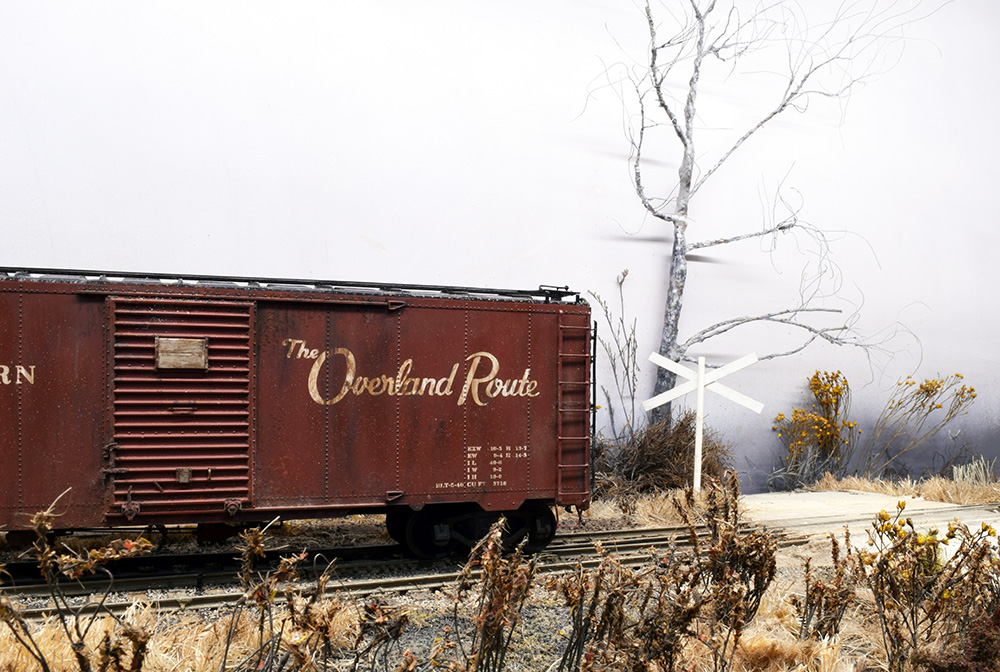
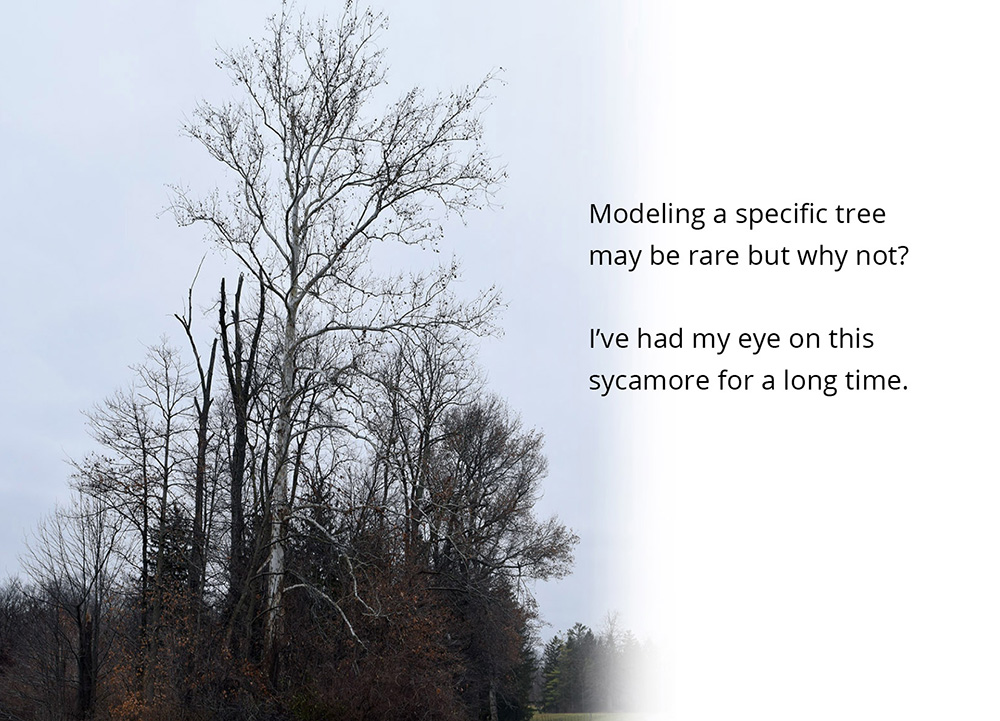
Evaluate and Modify
As I evaluated the model I felt the coloring of the upper branches needed modifying and brought it back to the bench to do so. As you see in the photos, there are several open areas that want to be filled. I could work up more branches but the full-sized tree is surrounded by others competing for the same water and light. Adding a small number of simpler tree models to the scene would fill in the empty spaces while allowing the sycamore to remain as the dominant feature.
This tree model is a first effort and the close-up photos tell an honest and ruthless story about how rough the work is. However, this is modeling in every sense. It’s picking a subject, determining its critical characteristics and using observation, analysis, judgment and other skills to recreate it in miniature form. There’s no difference in my approach from a building or a freight car. In many ways, organic forms like this are less demanding of precision than built objects but equally demanding of our care and attention in rendering them well. There’s truly a wealth of ideas to explore here.
Regards,
Mike
Nice timing on this Mike. I am just finishing a photo diorama for HO projects and been adding trees to it. Being HO even big trees are a little smaller than your project but they still help set the scene. In a smaller scale I can get away with using with using natural materials for some trees, I scour the ground all the time at work and home for interesting roots etc… also wire armature trees texture are a little less visible. It is tough to replicate randomness of things like trees in the woods when most of what we do is geared toward precision with square and straight.
Yours is unique too because normally layout trees are just filler and backdrops or line of sight blocks. Yours is THE scene there. A fun read as always. Thanks!
Hi Steve,
It’s funny how people will work hard to carry something to the nearest thousandth of an inch without thinking twice about it, yet stop dead in their tracks over an organic form with a wider tolerance and latitude for interpretation.
I’ve also used natural materials when I can find them. Look long enough and you develop an eye for the shapes and sizes that work.
Mike